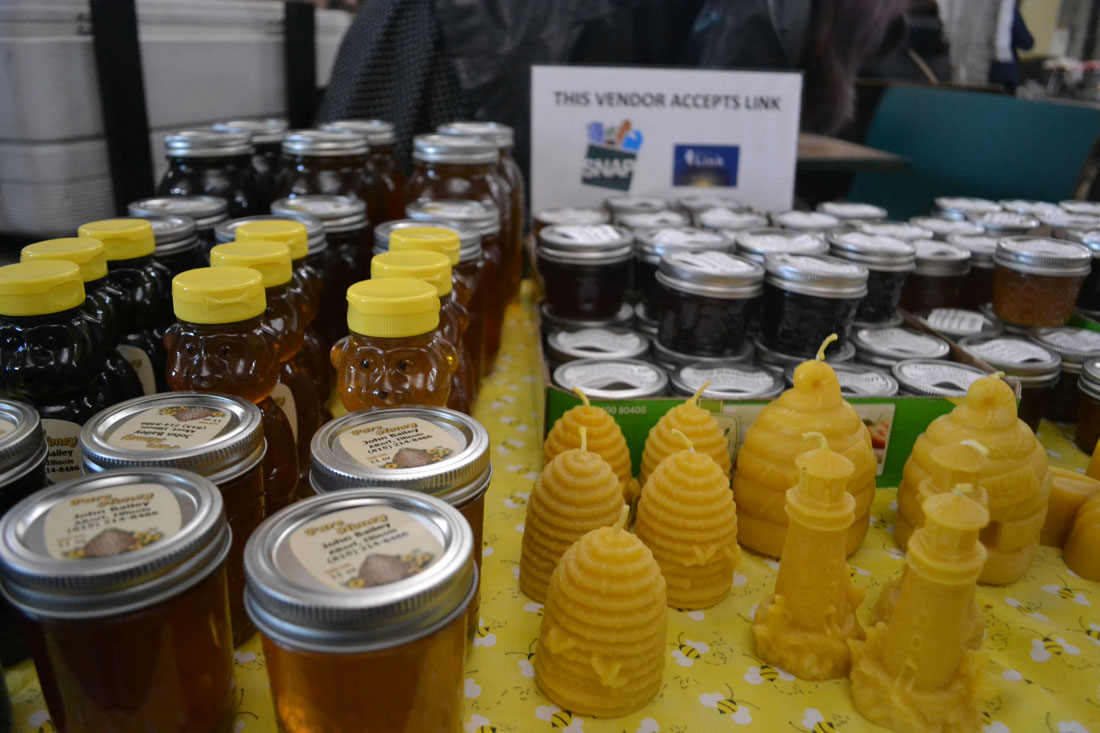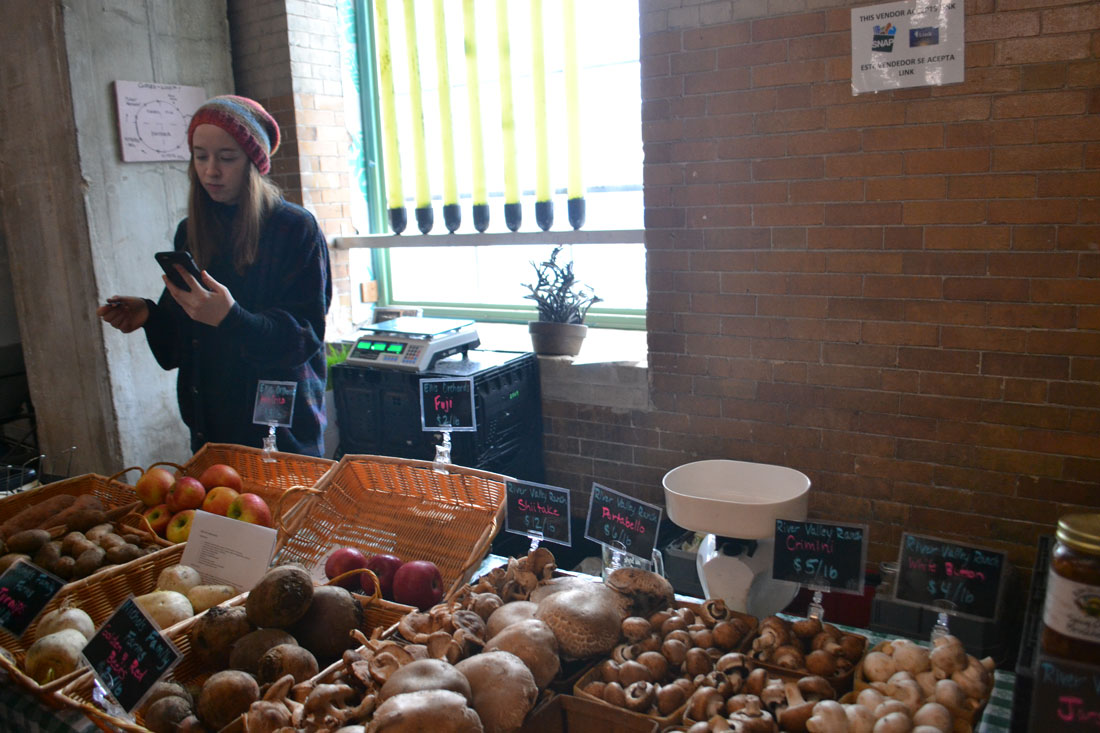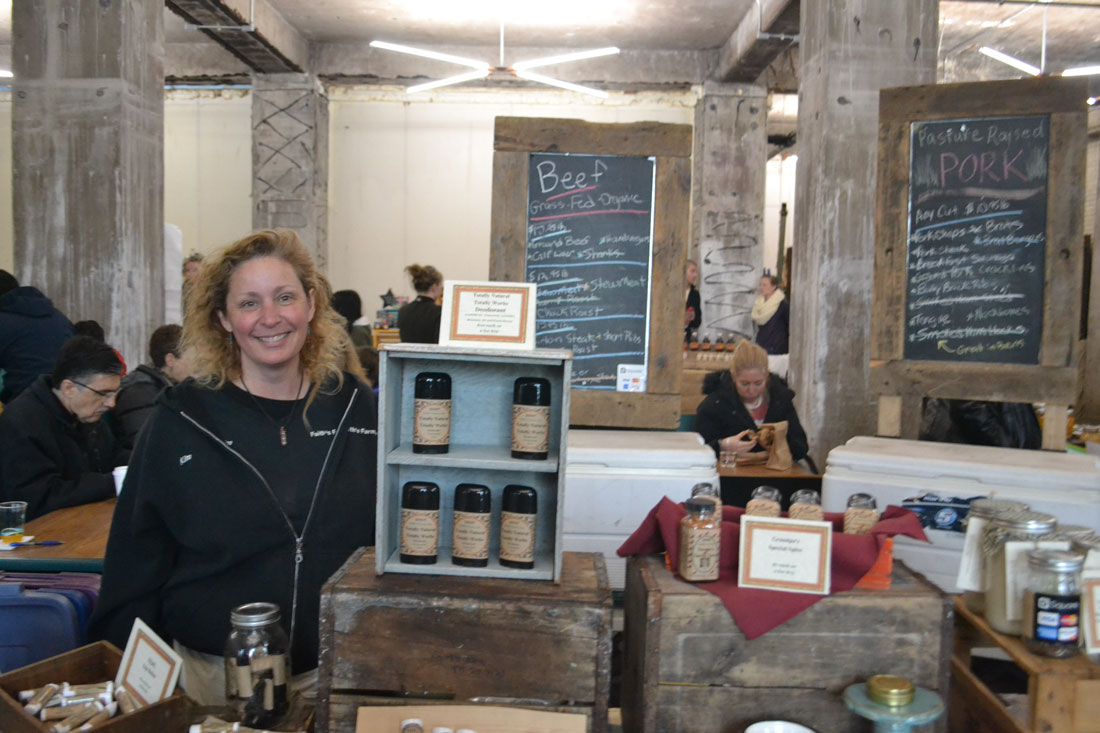By Anna Boisseau
Farmers markets might seem like an unaffordable option for those on a limited food stamp budget, but that’s changing thanks to the double value coupon program. In most Chicago-based markets and some others across the state, food stamp recipients receive coupons to match up to $25 of Supplemental Nutritional Assistance Program (SNAP) benefits.
“They can get high quality local food for the same price as they could get cheap processed grocery food,” said Kim Snyder, owner of Faith’s Farm in Bonfield, Ill.
Currently, with no state-wide funding for the program, many low-income Illinoisans are left without the financial means for healthier shopping at farmers markets. But a bill currently introduced into the Illinois House of Representatives, referred to as the “Healthy Food Incentives Fund,” could change that. The legislation proposes to carve out $1 million a year to endow coupon programs across the state.

“What we’ve discovered over the years is it’s is really not super sustainable the way it currently functions,” said Connie Spreen, executive director of the Experimental Station, a Chicago-based non profit that helps fund the City of Chicago’s coupon program. Spreen said the Experimental Station currently redistributes its grant money and seeks other local donations to fund markets in Chicago.
“Unless we can get some way of bringing in a stable amount of funding consistently, it kind of comes and goes,” Spreen said.
With Illinois’ budget crisis, bills like the Healthy Food Incentives Fund are struggling to gain support in the state government. But according to Mark Peysakhovich, an American Heart Association advocate for the legislation, the bill would actually save the state government money.
“There’s almost an exact match between people who are on food stamps and people who get government-paid-for Medicaid,” Peysakhovich said. “If we get people on Medicaid eating healthier, as tax payers, we’re going to be spending less money on health care.”
According to Spreen, a farmers market is a healthier food environment than a supermarket. “You don’t have tons of chips. You don’t have tons of sugary food. The vast majority of things are healthy.”
“Changing eating habits, changing cooking habits, requires incentive,” Peysakhovich said. He said he thinks that the double value coupons will inherently lead to healthier eating. “We can certainly …try to tell people eat this and not that and you’ll live longer. But saying let us match your 10 dollars with another 10 dollars….is much more powerful than just trying to tell somebody that you know what’s good for them.”

Spreen also points out that the coupon program doesn’t just benefit SNAP recipients; it helps stimulate the local economy by bringing in a new income source for farmers.
Snyder said she benefits from the new customers that the double value coupon program brings in. “It’s people who would not normally be able to buy from me,” she said.
The Experimental Station found Snyder’s observation to be true. According to surveys they conducted from 2013-2015, 92 percent of food stamp shoppers at their 61st street market said the double value coupon program was “important” or “very important” to their decision to come to the market.
Kathleen Mueller, who works at local farm Urban Canopy, said a significant fraction of their customers are SNAP recipients. With a subsidy from the City of Chicago, Urban Canopy is able to set up summer markets in food desert environments. Mueller admits that non-subsidized farms might struggle to make enough money in these markets. By doing community outreach in the form of canvassing and developing relationships with local churches, Mueller said she has seen the SNAP customer base growing.
“It is an investment,” said Spreen of the double value coupon program. “Sometimes you’ve got to put money into investments to reap the rewards.”


